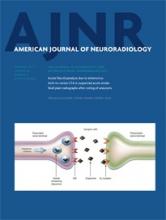Article Figures & Data
Tables
Levels of Evidence Type of Evidence Ia Systematic review (with homogeneity)b of level-1 studiesc Ib Level-1 studiesc II Level-2 studiesd Systematic reviews of level-2 studies III Level-3 studiese Systematic reviews of level-3 studies IV Consensus, expert committee reports or opinions and/or clinical experience without explicit critical appraisal; or based on physiology, bench research, or “first principles” ↵a Adapted from The Oxford Centre for Evidence-Based Medicine Levels of Evidence (2001) and the Centre for Reviews and Dissemination Report Number 4 (2001). Copyright National Institute for Health and Care Excellence February 2004.
↵b Homogeneity means there are no or minor variations in the directions and degrees of results between individual studies that are included in the systematic review.
↵c Level-1 studies are studies:
-
• that use a blind comparison of the test with a validated reference standard.
-
• in a sample of patients that reflects the population to whom the test would apply.
-
↵d Level-2 studies are studies that have only 1 of the following:
-
• narrow population (the sample does not reflect the population to whom the test would apply).
-
• use a poor reference standard (defined as that where the “test” is included in the “reference,” or where the “testing” affects the “reference”).
-
• the comparison between the test and reference standard is not blind.
-
• case-control studies.
-
↵e Level-3 studies are studies that have at least 2 or 3 of the features listed above.
Class I Conditions for which there is evidence for and/or general agreement that a procedure or treatment is beneficial, useful, and effective Class II Conditions for which there is conflicting evidence and/or a divergence of opinion about the usefulness/efficacy of a procedure or treatment Class IIa Weight of evidence/opinion is in favor of usefulness/efficacy Class IIb Usefulness/efficacy is less well-established Class III Conditions for which there is evidence and/or general agreement that a procedure/treatment is not useful/effective and in some cases may be harmful ↵a From the American Heart Association Evidence-Based Scoring System.












